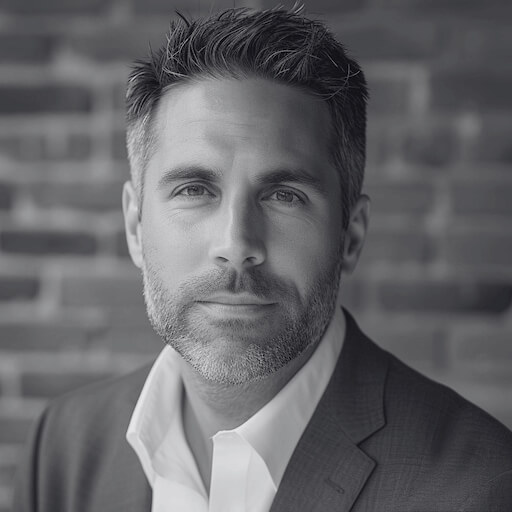Washington Child Abuse Statistics 2023: Facts about Child Abuse in Washington reflect the current socio-economic condition of the state.

LLCBuddy editorial team did hours of research, collected all important statistics on Washington Child Abuse, and shared those on this page. Our editorial team proofread these to make the data as accurate as possible. We believe you don’t need to check any other resources on the web for the same. You should get everything here only 🙂
Are you planning to start a Washington LLC business in 2023? Maybe for educational purposes, business research, or personal curiosity, whatever it is – it’s always a good idea to gather more information.
How much of an impact will Washington Child Abuse Statistics have on your day-to-day? or the day-to-day of your LLC Business? How much does it matter directly or indirectly? You should get answers to all your questions here.
Please read the page carefully and don’t miss any words.
On this page, you’ll learn about the following:
Top Washington Child Abuse Statistics 2023
☰ Use “CTRL+F” to quickly find statistics. There are total 16 Washington Child Abuse Statistics on this page 🙂Washington Child Abuse “Latest” Statistics
- Approximately 80% of fatal cases of child abuse include at least one parent as the offender.[1]
- A total of 1,840 children are believed to have died in 2019 as a consequence of abuse and neglect, or five children per day on average, according to state officials.[1]
- Children that are 3 years old or younger made up more than 70% of the children who perished as a consequence of child abuse or neglect.[1]
- The projected lifetime cost of lost worker productivity for instance from only 2015 over $830,000 is spent by each victim on health care, special education fees, child welfare, and criminal justice.[1]
- The Washington state organization that investigates child abuse and neglect got 87% fewer calls from worried teachers, counselors, and other mandated school reports on average each week through June after school facilities closed the previous academic year.[2]
- Based on 2015 analyzed event cases with 2,368,000 nonfatal and 1,670 fatal victims, the projected U.S. economic impact of child abuse was $2 trillion.[1]
- Studies show that certain state agencies significantly undercount child abuse deaths by 50% or more.[1]
- According to Reeds, Advocacy centers in Washington, such as the Arthur D. Curtis Children’s Justice Center in downtown Vancouver, have seen a 50 to 80 percent decrease in the number of child abuse referrals.[3]
- This is consistent with national statistics that indicate a 40.60% decrease in the overall reporting of child abuse.[2]
- Between 33 and 10 million children are exposed to intimate partner abuse each year, according to a 2000 government study.[4]
- A total of 1840 children are believed to have died in 2019 as a consequence of abuse and neglect, or five children per day on average, according to state officials.[1]
- The ethnicity with the most child abuse victims in Washington State is white children, which comprises 55.52% of all child abuse cases reported in the state from 2016 – 2020.[1]
- Neglect is the most common form of child maltreatment in Washington State, which comprises 89.16% of all child abuse cases in the years 2016 – 2020.[1]
- In the year 2020, there’s a total of 2,803 children waiting for adoption in Washington State.[1]
- According to data, an average of 0.082% of children in foster care were maltreated in Texas from 2016 – 2020.[1]
- The data from cwoutcomes.acf.hhs.gov shows that 8.28% of children experience a recurrence of child abuse or neglect from 2016 – 2020.[1]
Also Read
- Alaska Child Abuse Statistics
- Arizona Child Abuse Statistics
- Arkansas Child Abuse Statistics
- California Child Abuse Statistics
- Colorado Child Abuse Statistics
- Connecticut Child Abuse Statistics
- Florida Child Abuse Statistics
- Georgia Child Abuse Statistics
- Illinois Child Abuse Statistics
- Indiana Child Abuse Statistics
- Iowa Child Abuse Statistics
- Kansas Child Abuse Statistics
- Kentucky Child Abuse Statistics
- Louisiana Child Abuse Statistics
- Maine Child Abuse Statistics
- Maryland Child Abuse Statistics
- Michigan Child Abuse Statistics
- Minnesota Child Abuse Statistics
- Montana Child Abuse Statistics
- Nebraska Child Abuse Statistics
- Nevada Child Abuse Statistics
- New Hampshire Child Abuse Statistics
- New Jersey Child Abuse Statistics
- New York Child Abuse Statistics
- North Dakota Child Abuse Statistics
- Ohio Child Abuse Statistics
- Oregon Child Abuse Statistics
- Rhode Island Child Abuse Statistics
- South Carolina Child Abuse Statistics
- South Dakota Child Abuse Statistics
- Tennessee Child Abuse Statistics
- Texas Child Abuse Statistics
- Utah Child Abuse Statistics
- Vermont Child Abuse Statistics
- Virginia Child Abuse Statistics
- Washington Child Abuse Statistics
- West Virginia Child Abuse Statistics
- District of Columbia Child Abuse Statistics
How Useful is Washington Child Abuse
The Washington child abuse laws require specific professionals, such as teachers, doctors, and social workers, to report suspected cases of child abuse to the authorities. This mandatory reporting helps ensure that cases of abuse are brought to light and investigated promptly, hopefully preventing further harm to the child involved. By requiring these individuals to report suspected abuse, the laws create a safety net for children who may not have anyone else advocating for their well-being.
In addition to mandatory reporting, Washington also has systems in place to investigate reports of child abuse and provide services to families in need. Child Protective Services (CPS) plays a crucial role in this process, by assessing the safety of the children involved, providing support to families, and, if necessary, removing children from harmful situations. These services are essential in ensuring that children are protected and have access to the resources they need to heal from any trauma they may have experienced.
One of the challenges facing the Washington Child Abuse laws is the issue of underreporting. Many cases of child abuse go unnoticed or unreported, either due to lack of awareness, fear of reprisal, or other barriers. This underreporting can prevent children from receiving the help and protection they need to thrive. It is essential that efforts be made to increase awareness of child abuse laws and resources available to families in need, in order to encourage more people to come forward and report suspected abuse.
Another concern is ensuring that children who have been removed from abusive situations receive the appropriate support and services to help them heal and move forward. This may include counseling, therapy, or other trauma-informed interventions to address the emotional and physical impact of abuse. Washington must continue to prioritize the well-being of these children, by investing in resources and programs that provide ongoing support and care.
While the Washington Child Abuse laws are well-intentioned and have made progress in protecting children from harm, there is always room for improvement. Continued efforts are needed to raise awareness of the signs of child abuse, increase reporting, and ensure that all children are receiving the care and protection they deserve. By staying vigilant and committed to this important issue, we can work towards a future where every child in Washington grows up safe, healthy, and loved.
Reference
- childhelp – https://www.childhelp.org/child-abuse-statistics/
- seattletimes – https://www.seattletimes.com/education-lab/with-so-many-schools-online-child-maltreatment-reports-in-washington-plummet/
- columbian – https://www.columbian.com/news/2020/apr/18/child-abuse-reports-in-washington-down-nearly-50-percent/
- washington – https://www.washington.edu/news/2006/09/12/violence-in-the-home-leads-to-higher-rates-of-childhood-bullying/
- hhs – https://cwoutcomes.acf.hhs.gov/cwodatasite/pdf/washington.html
- washingtonpost – https://www.washingtonpost.com/dc-md-va/2020/08/19/child-abuse-victims-plunge-pandemic
